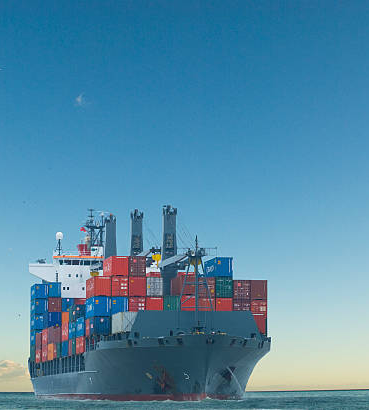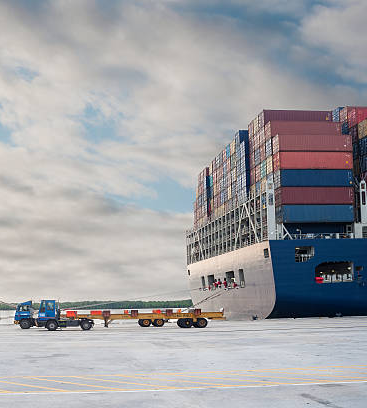
В G-Billion Logistics мы понимаем важность быстрого времени транзита в условиях конкурентной бизнес-среды. Наши экспресс-услуги в США разработаны для обеспечения молниеносной доставки по всей стране. С сетью стратегически расположенных узлов и партнерствами с ведущими перевозчиками мы гарантируем, что ваши срочные отправления достигнут места назначения вовремя. Доверьтесь нашей команде экспертов в области логистики для надежных, безопасных и эффективных транспортных решений, адаптированных к вашим уникальным потребностям. Независимо от того, требуется ли вам доставка в тот же день, на следующий день или за ночь, экспресс-услуги G-Billion в США гарантируют непревзойденный уровень скорости и точности.

G-BILLION является лидером в предоставлении Экспресс-услуги США , специализируясь на надежных, быстрых и безопасных транспортных решениях для предприятий по всему миру. Наша express co services LLC гарантирует, что ваши грузы доставляются быстро, независимо от срочности. Будь то критически важные отправления или необходимость в курьерской службе 24 часа в сутки , G-BILLION готов поддержать ваши логистические потребности высококачественным сервисом и эффективностью. Сотрудничайте с нами, чтобы оптимизировать вашу цепочку поставок и обеспечить своевременные доставки для ваших клиентов.

G-Billion Logistics предлагает полные экспресс-услуги в США для всех срочных отправлений компаний. Начиная с упаковки и маркировки и до последней мили доставки, все это охвачено нашей услугой. Мы сотрудничаем с ведущими перевозчиками, что позволяет нам предлагать низкие тарифы, сохраняя при этом быструю и качественную услугу. Используйте наши знания в области местных транспортных систем; будьте уверены, что ваши экспресс-доставки в Америке находятся в руках опытных логистических экспертов. Чтобы узнать больше об этой компании и о том, что она может сделать для вас в области доставки по Америке, пожалуйста, посетите www.g-billion.com прямо сейчас!

Упростите свои процессы импорта и экспорта с нами. Мы предлагаем быстрые услуги в США, которые просты в использовании. Наша способность к таможенному оформлению, опыт в документации и знания в области логистического планирования являются ключевыми для обеспечения безопасного прохождения товаров через разные страны, включая США. Это означает, что мы поможем вам правильно подготовить транспортные документы и убедиться, что они соответствуют всем нормативным требованиям, чтобы не возникло никаких задержек на пути до их конечных пунктов назначения. С нашей службой American express, которая берет на себя международные сложности, у вас остается больше времени для сосредоточения на том, что имеет наибольшее значение – рост бизнеса на местном или глобальном уровне!

Выберите G-Billion Logistics для быстрого и безопасного экспресс-сервиса в США, когда скорость имеет решающее значение. В Америке наши специалисты обладают знаниями, чтобы быстро перемещать ваши товары через распределительные центры, соблюдая все правила и нормы. Независимо от того, какие товары вам нужно срочно или с высокой ценностью, у нас есть услуга, которая специально предназначена для этих нужд. Работайте с нами над оптимизацией вашей цепочки поставок с помощью надежных экспресс-услуг в США.

SHENZHEN G-Billion Logistics LTD. (далее "GBL"), основанная в Шэньчжэне в 2023 году, представляет собой комплексную платформу услуг по экспортной логистике. С помощью самостоятельно разработанной, глубоко цифровой системы, интегрирующей логистику, финансы, управление рисками и совместную работу в OA, GBL обладает качественными авиаперевозками, зрелыми диспетчерскими ресурсами и разнообразием категорий товаров.
GBL позиционируется как "Создатель ведущей китайской платформы услуг по трансграничному экспорту", используя ИТ-технологии и цифровизацию как основные драйверы. Она создает модель 4+1, включающую четыре ключевых направления бизнеса – трансграничная логистика, трансграничная электронная коммерция, зарубежные облачные склады и финансирование цепочек поставок, а также полностью цифровую платформу, фокусируясь на укреплении китайского производства для международного расширения.
У нас есть глобальная сеть партнеров и агентов, которые могут предложить вам надежные и экономически эффективные логистические решения. Независимо от того, нужна ли вам доставка воздушным, морским, наземным транспортом или много模одальным перевозкам, мы можем это организовать для вас.
У нас есть профессиональная команда экспертов, которая может предложить вам индивидуальные и гибкие услуги. Мы можем разработать и реализовать логистические планы, соответствующие вашим конкретным требованиям, таким как управление запасами, складирование, дистрибуция, таможенное оформление и многое другое.
У нас есть передовая технологическая платформа, которая может повысить вашу видимость и контроль над цепочкой поставок. Вы можете отслеживать свои грузы в реальном времени, получать доступ к данным и отчетам, а также связываться с нами в любое время и из любого места.
У нас есть клиентоориентированная культура, которая ценит ваше удовлетворение и обратную связь. Мы привержены предоставлению вам высококачественных и оперативных услуг, и мы всегда готовы решать любые проблемы или вызовы, которые могут возникнуть.
G-Billion Logistics предоставляет различные экспресс-услуги в США, включая доставку в тот же день, доставку на следующий день, доставку в течение ночи, экспресс-транспорт с критическим сроком и ускоренные варианты наземной транспортировки для удовлетворения различных потребностей
В G-Billion Logistics мы серьезно относимся к безопасности ваших грузов. Наши экспресс-услуги в США включают в себя защитную упаковку, отслеживание в режиме реального времени и сотрудничество с надежными перевозчиками, которые соблюдают строгие протоколы безопасности. Мы также предлагаем страховку, чтобы обеспечить дополнительное спокойствие во время транзита.
Да, в зависимости от выбранной вами услуги, G-Billion Logistics предлагает гарантированные сроки доставки для наших экспресс-сервисов в США. Например, наши варианты доставки за ночь и на следующий день поставляются в определенные сроки, гарантируя, что ваш пакет прибудет в пункт назначения в обещанный срок.
Американские экспресс-сервисы G-Billion Logistics предназначены для обработки различных типов грузов, от документов и небольших посылок до более крупных грузов и палетных грузов. Однако некоторые предметы могут потребовать специальной обработки или оформления в соответствии с правилами. Свяжитесь с нами, чтобы обсудить ваши конкретные требования к отправке.
Хотя для каждого типа экспресс-сервисов США существуют ограничения по размеру и весу, G-Billion Logistics может принимать самые разные размеры и вес посылок. Для получения точной информации о вашей конкретной поставке, пожалуйста, ознакомьтесь с нашими правилами обслуживания или свяжитесь с нашей командой напрямую.


